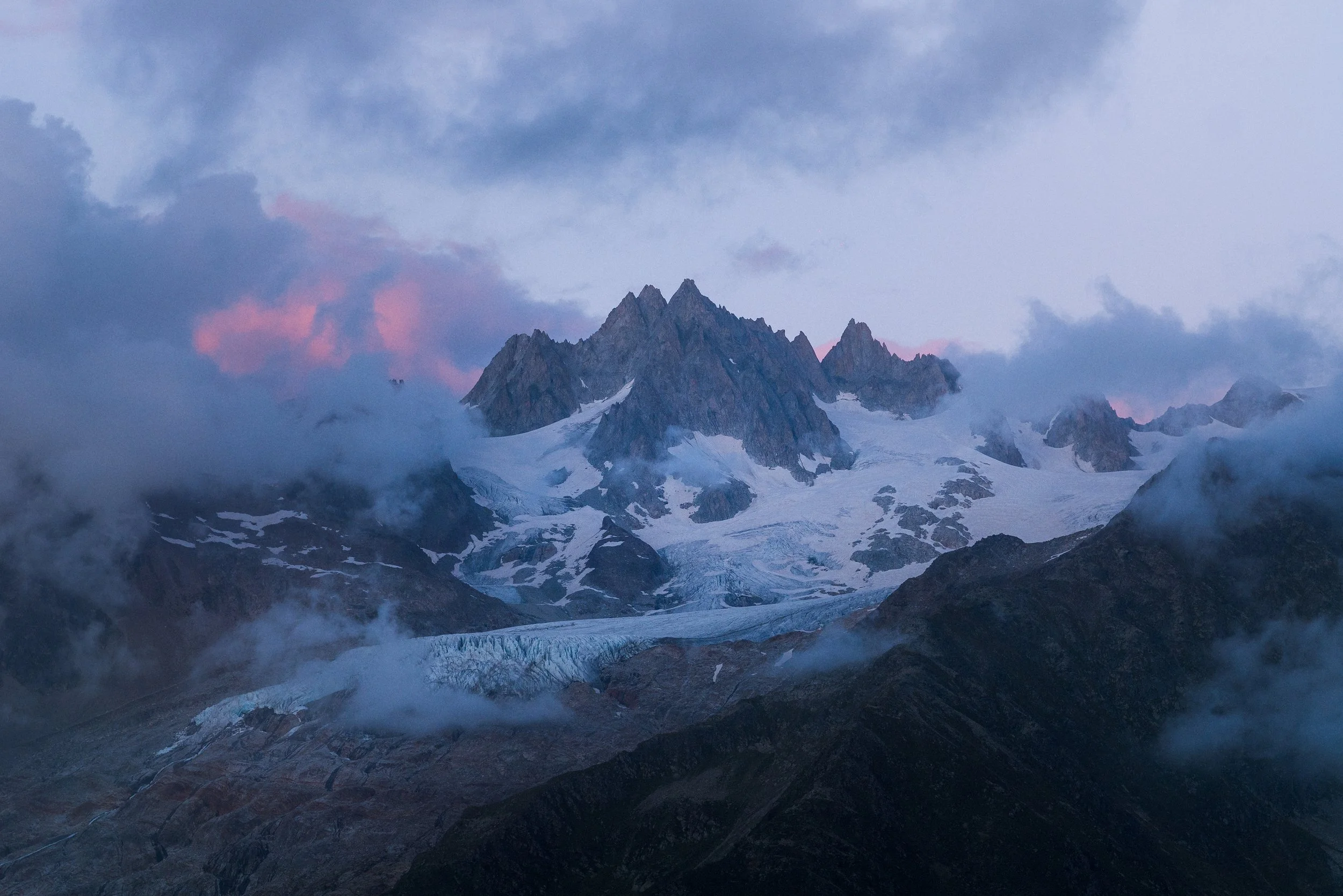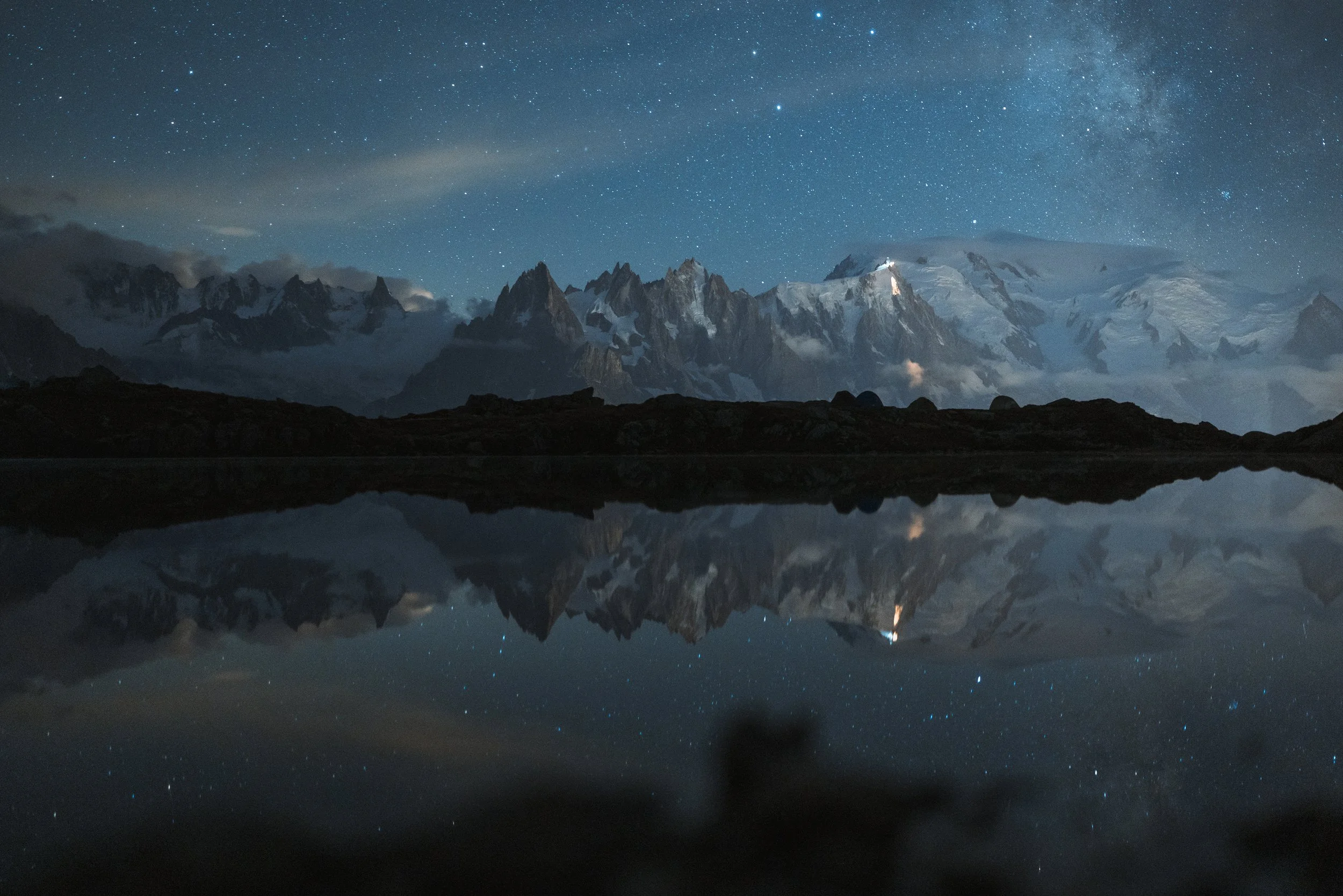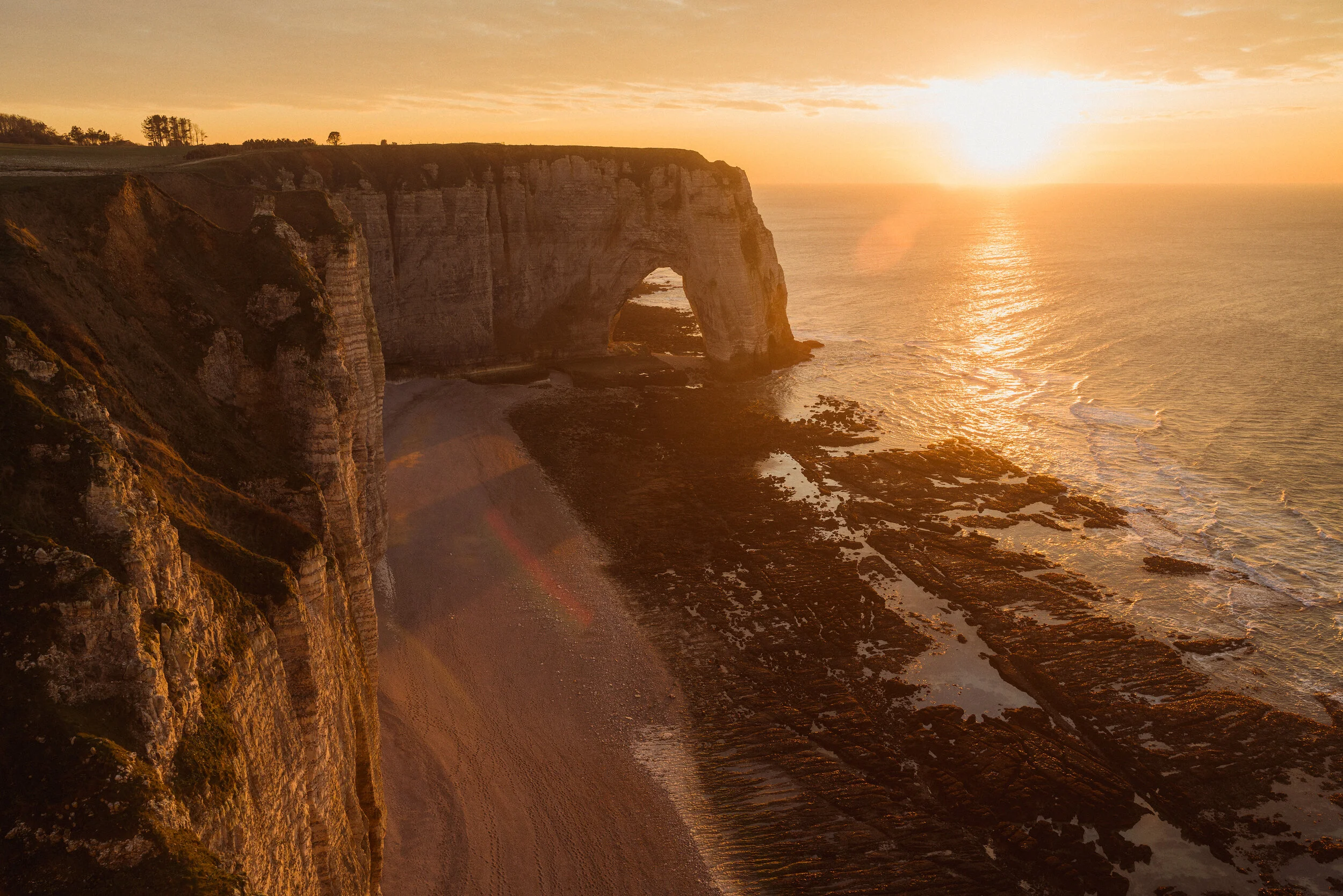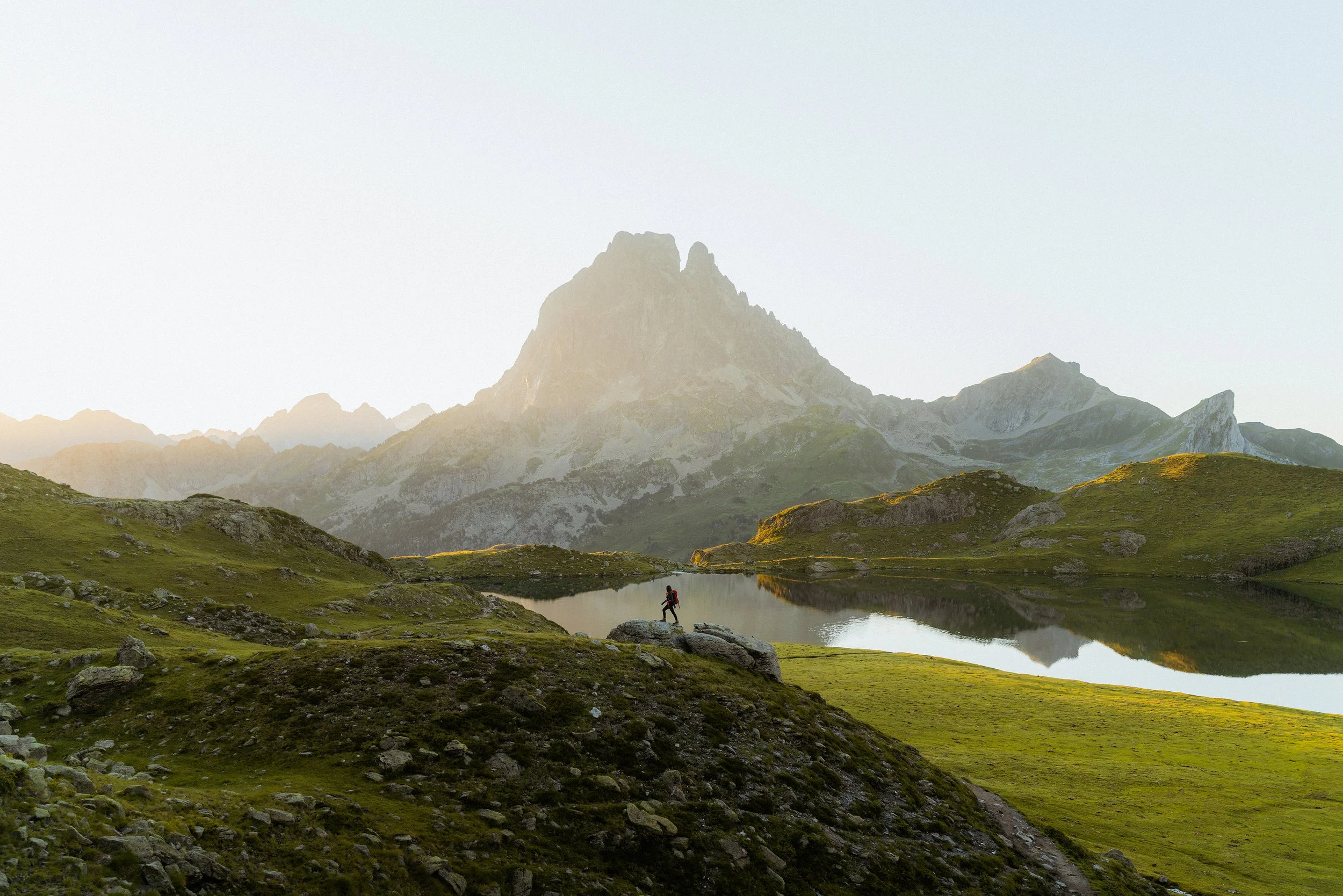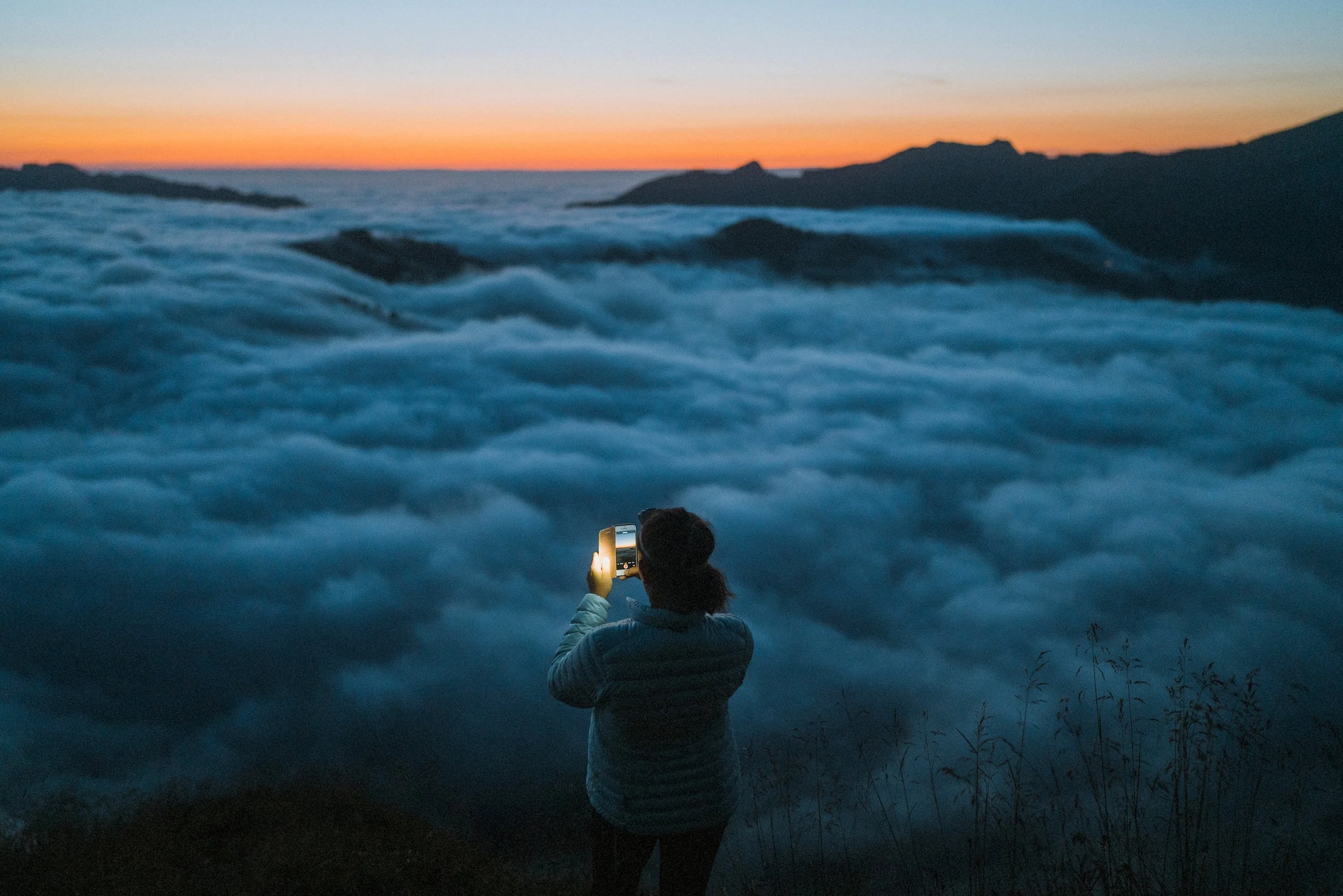10 Tips to Take Great Landscape Photos
If you’re starting your journey into landscape photography or just enjoy taking photographs of your travels and hikes. I selected for you 10 tips to take great landscape photos.
1 - Shoot at the right time
Chamonix, France
There is no great photos without a good light which means you need to shoot at the right time.
Dawn
Sunrise
Golden Hour (After the sunrise / Before the sunset)
Sunset
Dusk
Here are the perfect times to shoot landscape because the light is softer and often bring some beautiful colors in the sky.
I don’t recommend shooting at high noon because of the harsh light and the undiffused light, it will create photos that look flat. Although, from time to time you can have some great light condition during the day when the sun is playing with the clouds.
Notes : By going early in the morning and late in the evening you will often avoid the crowd which means you will enjoy the place for yourself. The experience will be even better.
2 - Use reflective surfaces
Lacs des Chéserys, France
Use a reflective surface like a lake or a puddle to add some symmetry in your composition. This will also add a bit of magic to your image. However, this is really weather dependent mostly because of the wind.
Notes : If the wind makes the reflection distorted, try to use a tripod and shoot at a slower shutter speed. This will help you to get a cleaner and better reflection.
3 - Use the foreground to add depth of field
Interlaken, Switzerland
Add some natural elements from the landscape (flowers, rocks, ice, etc.) in the foreground of your image to help you compose your photo and add some depth of field. It can also be a really useful technique to hide any distraction or unwanted element in the landscape.
Notes : Shoot at a low aperture between F1.2 and F3.5 to get a nice and smooth bokeh in the foreground or in the background if you choose to focus on a detail. If you only have a smartphone you can use the “Portrait” mode or the “Pro” mode to achieve this look.
4 - Rule of the third
Mount Cook National Park, New Zealand
If there is one rule you should know is this one : imagine two equally spaced horizontal and vertical lines which divide your image into nine equal parts. This will help you to compose your image and place your subject and key elements. A good composition is really important because it will allow the people to quickly get the message and identify the subject. Know that it exists more composition techniques and perhaps I could do another article about this subject.
Notes : Try as possible to place your key elements where the lines are crossing each other. Use the spaces between the lines to place your foreground, middle ground and background.
5 - Add the sun light
Etretat, France
This one is my personal favorite. If I choose to add a warm atmosphere I like to include the soft light coming from the sun to the right or left of my image when shooting a landscape at golden hour.
Notes : This has to be subtle, when too much light is entering the lens this will add some unwanted sun flares acroos the image. You can use a diffusion filter on your lens to get a softer result. Here’s the one I’m using : Tiffen Black Pro Mist 1/8 and 1/4.
6 - Focus on few elements
Cadini di misurina, Italy
One of the mistakes beginners does when there are in front of a beautiful and huge landscape is to capture the entire scene by doing a panorama shot. Instead, try to focus on one detail that have caught your eyes, that little thing that makes the landscape so special for you.
Notes : In some situation, a zoom lens this can be really useful.
7 - Natural leading lines
Blenheim, New Zealand
When composing your image be attentive at the natural leading lines. It can be anything : a river, a track, a tree, etc. Then use them to compose your image to naturally guide the eyes of the viewer through the image.
Notes : Use this technique to highlight your subject. Example : In the photo above I used it to guide the eyes of the viewer to the mountains located in the background.
8 - Silhouette
Cape Campbelle, New Zealand
When you shoot against the sun light you can get very creative and capture some nice silhouette, especially when the light is low in the horizon.
Notes : My favorite time to capture silhouette is right after the sunset when the sky is colorful. To achieve this look make sure to well expose the sky.
9 - Include a person
Les Lacs d’Ayous, France
This is something I love to do when I’m in front a huge landscape. Including a person at the right location to your image to show the scale of the place.
Notes : If you’re alone make sure to bring a tripod, setup a timer on your camera to have some time to place yourself in the image.
10 - The best camera is the one that’s with you
Interlaken, Switzerland
That’s everything you need to know to capture great landscape photos and don’t worry about which camera you should use – The best camera is the one that’s with you. I started with a smartphone and I still take picture with it when I don’t have my camera with me. Go outdoor and shoot !
I hope this article will help you in your photography journey. Don’t forget to share it if you think this can be helpful for someone else.
Enhance your photos by downloading my free preset “Aspe”
from my Adventure Preset Pack click here

